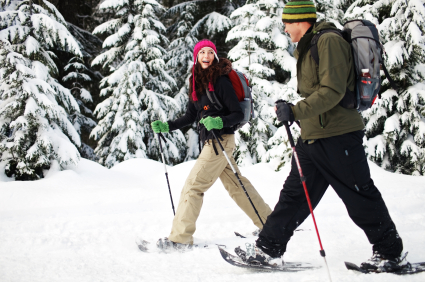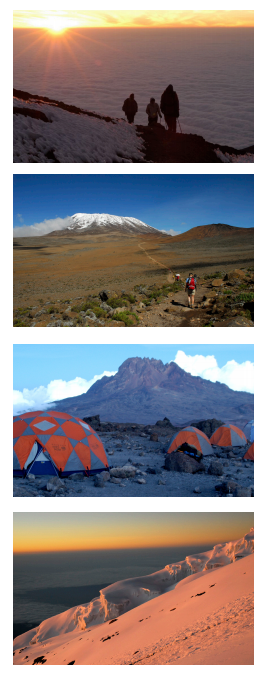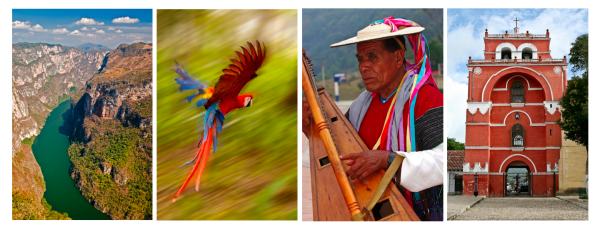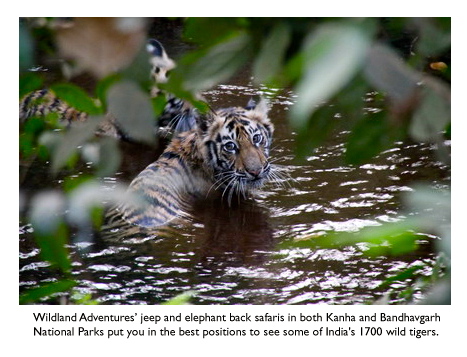This guest blog is by Irene Lane, founder & president of Greenloons.com.
Have you noticed how companies of all sizes are touting their local credentials these days? Whether you are shopping at your local supermarket or deciding on your next vacation destination, advertisements are replete with images of locally sourced fresh food or locally guided unique vacation services.
 And why not? “Buy local” and “local first” campaigns are speaking to our fundamental values to help our local communities before purchasing goods and services provided by large conglomerates. However, in an effort to align with our ideals, some corporate localwashing has also surfaced within the ecotourism industry since the eco-traveler is one that seeks an authentic connection with people and nature. Examples of localwashing by ecotourism businesses include ones that:
And why not? “Buy local” and “local first” campaigns are speaking to our fundamental values to help our local communities before purchasing goods and services provided by large conglomerates. However, in an effort to align with our ideals, some corporate localwashing has also surfaced within the ecotourism industry since the eco-traveler is one that seeks an authentic connection with people and nature. Examples of localwashing by ecotourism businesses include ones that:
- emphasize local guides and services only to be foreign owned and managed
- do not purchase any local items such as produce, raw building materials, crafts or furniture but advertise as authentically local cultural experiences
Rather than agonizing over online reviews, guide books and definitions of local-sourced and sustainable tourism; instead use these five planning tips that will help quickly evaluate the local merits of your vacation:
- Look for legitimate eco-certification labels
- Choose travel suppliers that support local communities in multiple ways
- Support tourism providers that specifically offer locally produced items:
- Choose activities that emphasize environmental awareness
- Search for opportunities to immerse yourself in local cultural traditions
 “If you can walk, you can snowshoe,” say legions of snowshoeing enthusiasts. The sport’s easy learning curve is the inspiration behind The Wayfarer’s new “Walk on Snow in Colorado” trek, a four-day/three-night, calorie-blasting journey that includes accommodations at the historic (and haunted) Stanley Hotel made famous by Stephen King’s The Shining, all meals, and a 25-minute massage or reflexology treatment.
“If you can walk, you can snowshoe,” say legions of snowshoeing enthusiasts. The sport’s easy learning curve is the inspiration behind The Wayfarer’s new “Walk on Snow in Colorado” trek, a four-day/three-night, calorie-blasting journey that includes accommodations at the historic (and haunted) Stanley Hotel made famous by Stephen King’s The Shining, all meals, and a 25-minute massage or reflexology treatment.
Once requisite gear for fur traders, the snowshoe is increasingly considered a winter work-out essential by snow-loving sports enthusiasts. The Wayfarers’ Walk will average two to three miles per day, depending on depth of snow and other terrain conditions. In between, participants will enjoy shopping and lunch in the charming town of Estes Park, a spa treatment at the Stanley’s Parlour Spa, and healthy regional fare in the hotel’s relaxed and luxurious Cascades Restaurant.
Ideal for both first-time and long-term snowshoers, the snowshoe walk pairs a leisurely exploration of the Rocky Mountain’s wintry white scenery with opportunities to unwind in one of the country’s most historic hotels. The 103-year-old Stanley Hotel is a member of Historic Hotels of America. Scheduled March 18-21, 2012, the Colorado Snowshoe Walk includes the hotel’s famed ghost tour, entrance to Rocky Mountain National Park and snowshoe rental.
Wayfarers’ Colorado Snowshoe Adventure, from $1,295 per person. Tel: 800 249 4620
 One of my favorite yearly projects is creating a gift guide for travelers. It gets me in the spirit of giving and reminds me how much fun it is to share cool products that help make exploring easier and more enjoyable.
One of my favorite yearly projects is creating a gift guide for travelers. It gets me in the spirit of giving and reminds me how much fun it is to share cool products that help make exploring easier and more enjoyable.
Wondering what to get the traveler in your clan? Check out my short-list of travel gifts now online at THE ADVENTURE BLOG or view the collection in the slide show below. For more ideas, see last year’s list as well.
“MOUNTAINS FOR WATER” KILIMANJARO CLIMB WITH ELEVATE DESTINATIONS.
 Begin the new year with an adventure that will make a difference.
Begin the new year with an adventure that will make a difference.
Climb Mount Kilimanjaro in Tanzania, the highest peak on the continent of Africa, and the tallest free standing mountain on earth while fundraising to construct a water reservoir for a community in need in Northern Kenya. The seven-day trip from Elevate Destinations starts at machame Gate, ascending via Stella Point, with a nighttime ascent to the summit.
A few spaces remain open for interested climbers who care about how drought is affecting East Africa, most specifically, Northern Kenya.
In 1998-2000, Kenya experienced a two year drought. Ongoing issues have prevented communities, livestock and wild animals from having enough water to drink. Daily, Samburu women have to walk for an hour or more to collect water. The shortage of water means ill-health and dehydration within the whole community - often leading to the prevalence of Trachoma, a leading cause of painful blindness. Reservoirs are of huge benefit to alleviate damage in times of drought.
The plight of this community is serious, and you can make a tangible difference. This climbing effort will raise funds to construct a rainwater reservoir, which will benefit a local community for decades to come.
Tell people you’re headed to Mexico and you’ll likely be warned to be careful, to reconsider, or even encouraged not to go at all. However, after living and working in Mexico for the past five months, I am happy to report that the country remains a warm, welcoming, and, with the exception of a few cartel hotspots, a safe place to visit.
But don’t just take my word for it. Follow the lead of more than 600 travel professionals (myself included), representing some 50 countries, who gathered recently (October 16-20, 2011) in San Cristobal de las Casas, a quaint colonial-era mountain town in the highlands of Chiapas, Mexico, for the industry’s most important annual event, the 2011 Adventure Travel World Summit*.
 In place of fear-inspiring headlines, greeting us in Chiapas and across the country, were hospitable locals, colorful colonial-era cities, culturally-rich indigenous communities, lush tropical rainforests, cloud-cloaked mountain ranges, deep river canyons, cattle-dotted ranch lands, and pristine coastal plains.
In place of fear-inspiring headlines, greeting us in Chiapas and across the country, were hospitable locals, colorful colonial-era cities, culturally-rich indigenous communities, lush tropical rainforests, cloud-cloaked mountain ranges, deep river canyons, cattle-dotted ranch lands, and pristine coastal plains.
For those ready to journey beyond the headlines and discover the real Mexico, here are eight hand-picked adventures from trusted adventure outfitters.
I know I’d love to view tigers in the wild.
I know India is a mind-bending destination that’s been transforming travelers for centuries.
But knowing whether my tourism dollars should, or should not, go to supporting tiger tracking in India… not so much.
 That’s why I rely on organizations like National Geographic, Sustainable Travel, and the Adventure Travel Trade Association, to help inform my travel choices.
That’s why I rely on organizations like National Geographic, Sustainable Travel, and the Adventure Travel Trade Association, to help inform my travel choices.
So ever since Wildland Adventures’ Tigers and Travels trip to India was recognized by National Geographic Traveler magazine as a 2011 Tour of a Lifetime, I’ve been itching to go.
On this 19-day tour, guests search for tigers in the famed Bandhavgarh and Kanha National Parks, explore ancient forts and castles, and are immersed in the contemporary cultural fabric of modern India.
Based from sustainable jungle lodges and restored manor homes and palaces, travelers learn about the current state of tigers in India and how tourism-supported programs such as Wildlands’ 10,000 Tigers initiative are working to bring these big cats back from the brink of extinction by empowering communities to protect their habitat and end illegal poaching.
The best part? By participating on this trip you help save tigers, in part by supporting the local communities around the parks so they benefit from ecotourism.
I’m sold. You?

